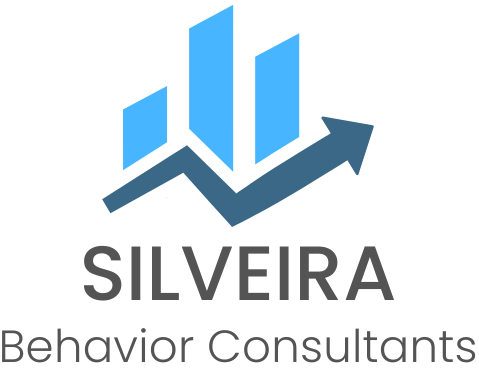The world of ABA blogging is evolving rapidly, with new voices, platforms, and expert perspectives emerging every day. As we move into 2025, staying ahead of these changes is critical for practitioners, parents, and advocates who rely on timely, evidence-based content. Whether you're sharing therapy insights, educational resources, or personal experiences, your blog plays a vital role in shaping public understanding and supporting families navigating autism and developmental challenges.
This guide is crafted to help you confidently navigate the shifting landscape of ABA blogging. Inside, you'll find expert insights, actionable strategies, and proven techniques for building, optimizing, and growing your ABA blog with real impact. From content planning and SEO optimization to community engagement and future-proofing, we’ll explore everything you need to elevate your platform and connect meaningfully with your audience.
The State of ABA Blogging in 2025: Trends and Opportunities
In 2025, the ABA blogging landscape is more dynamic than ever. A growing number of practitioners, caregivers, and advocates are contributing their voices, creating a rich ecosystem of shared knowledge and support. This surge in awareness around ABA therapy has led to increased demand for credible, accessible content—especially on topics like safety, early intervention, and family-centered care. For example, recent data shows that nearly half of children with autism have attempted to wander or elope, underscoring the urgent need for reliable resources that address real-world challenges.
Successful ABA blogs are now prioritizing clarity, inclusivity, and evidence-based insights to meet the needs of diverse audiences. Staying informed about the latest trends in ABA therapy—such as trauma-informed care, telehealth expansion, and culturally responsive practices—is essential for bloggers who want to remain relevant and impactful. By aligning your content with emerging priorities and community needs, your blog can become a trusted resource in the evolving ABA space.

The Growth of ABA Content Online in 2025
In 2025, the ABA blogging landscape is more vibrant and diverse than ever. Parents, providers, and self-advocates are actively sharing their experiences, contributing to a rich tapestry of perspectives. Today’s ABA blogs cover a wide range of topics—from therapy techniques and evidence-based practices to personal journeys and advocacy—making content more relatable and actionable. This growth reflects the increasing demand from families and professionals seeking support, strategies, and hope in navigating autism and developmental challenges.
Understanding Key Audience Segments in ABA Blogging
A successful ABA blog in 2025 recognizes the evolving needs of its audience. Readers now include not only parents of children with autism, but also ABA professionals, educators, and neurodivergent adults. There’s a growing interest from multicultural and international communities, expanding the reach and relevance of quality content. By understanding these diverse segments, bloggers can create resources that resonate deeply and foster a supportive, inclusive online environment.
Emerging Content Formats and Platforms for ABA Blogs
The format of ABA blogs has evolved significantly, embracing multimedia and interactive experiences. Podcasts, video blogs, and downloadable resources are now mainstream, offering new ways to engage audiences. For example, podcast series like BACA’s All Autism Talk bring expert insights directly to listeners. Interactive tools such as visual schedules and infographics simplify complex topics and enhance understanding for a wide range of users. These formats make ABA content more accessible, engaging, and impactful.
Prioritizing Accessibility and Inclusion in ABA Blogging
Accessibility is a defining feature of leading ABA blogs in 2025. Adaptive content—such as plain language posts, visual supports, and inclusive design—ensures neurodivergent readers are supported. Blogs increasingly highlight innovations in adaptive clothing, assistive technology, and culturally responsive practices, making information more practical and inclusive. This shift reflects a broader commitment to representation, where all voices and needs are valued within the ABA community.
Building Authority and Trust Through ABA Blogging
Establishing authority is essential for any ABA blog aiming to stand out. Clinically reviewed content and expert contributors lend credibility, while transparent sourcing builds trust with readers. For instance, BACA’s safety articles set a high standard for reliability and empathy. Today’s audiences expect content that is both accurate and compassionate, making expert involvement a key feature of any reputable ABA blog.
Monetization and Sustainability Strategies for ABA Blogs
Sustaining an ABA blog often requires thoughtful monetization strategies. Sponsored content, affiliate programs, and curated resource guides have become common revenue streams. Partnerships with ABA-related products and services support both the blog’s mission and financial viability. Careful selection of collaborators ensures that content remains trustworthy, relevant, and aligned with the needs of the community.
Key Insights for ABA Bloggers in 2025
The ABA blogging space in 2025 is competitive, diverse, and full of opportunity. Building trust and authority is the foundation for lasting impact. Blogs that embrace data-driven strategies, inclusive content, and multimedia formats consistently achieve higher engagement. By prioritizing reader needs and staying responsive to emerging trends, ABA bloggers can shape the future of the field and foster meaningful connections.
Building an Effective ABA Blog: Foundations for Success
Creating a successful ABA blog begins with a strong foundation. Whether you're a parent, professional, or advocate, the right strategy ensures your content stands out and delivers lasting value. Success goes beyond publishing—it’s about building trust, engaging meaningfully, and supporting your audience with clarity and purpose. In the next section, we’ll explore the essential steps and strategies for launching and growing an ABA blog that informs, inspires, and empowers your community in 2025.

Defining Your ABA Blog’s Purpose and Audience
Every successful ABA blog begins with a clearly defined purpose. Whether your goal is to educate families, advocate for autism awareness, support parents, or grow a clinical practice, identifying your mission shapes every content and design decision. Clarifying your intent helps ensure your blog remains focused, relevant, and impactful.
Understanding your core audience is equally important. Your readers may include parents of children with autism, ABA professionals, educators, or neurodivergent adults seeking community and insight. Some blogs specialize in IEP strategies for school readiness, while others highlight lived experiences or multicultural perspectives. By aligning your content with your audience’s needs, you create a space that resonates and builds trust. If your readers are new to ABA, linking to foundational resources like the Principles of Applied Behavior Analysis can help establish credibility and foster early engagement.
Crafting a Unique Value Proposition for Your ABA Blog
Your blog’s unique value proposition is what sets it apart in a crowded digital space. It’s the “why” behind your content—whether that’s expert interviews, multicultural insights, or firsthand stories from families navigating ABA therapy. This differentiator is what transforms casual visitors into loyal readers.
To build connection, incorporate real-world examples and case studies. For instance, share a family’s journey through the IEP process or highlight adaptive strategies used in daily routines. Authenticity and specificity make your content relatable and memorable. Consider what your personal experience brings to the table—clinical expertise, parenting tips, or innovative resources—and make that value clear in every post. A strong value proposition helps your ABA blog stand out and stay relevant.
Designing an Effective ABA Blog: Website Features and Structure
A user-friendly website is essential for engaging readers and encouraging repeat visits. Your ABA blog should prioritize mobile responsiveness and intuitive navigation, ensuring that visitors can easily access content across devices. Organize your site into clear sections for blog posts, downloadable resources, podcast episodes, and contact information to streamline the user experience.
Consider a sample structure that includes:
- A homepage with your mission and featured content
- A blog archive organized by topic or audience type
- A resource hub with visual schedules, checklists, and guides
- A podcast or video section for multimedia engagement
- A contact page for inquiries, collaborations, or service requests
This structure supports both discoverability and usability, helping readers find what they need while reinforcing your blog’s credibility and professionalism.
| Section | Purpose |
| Blog Posts | Regular updates and insights |
| Resources | Downloadable guides, checklists |
| Podcasts | Audio content for deeper learning |
| Contact | Easy connection and feedback |
Content Planning and Editorial Calendar
Consistency is the backbone of any ABA blog. Establishing a structured editorial calendar ensures your posts, interviews, and family stories are published on a regular schedule. This approach keeps your content fresh, relevant, and aligned with reader expectations.
Plan topics around seasonal needs—such as summer safety tips or back‑to‑school readiness—to balance timely updates with evergreen resources. By mapping out content in advance, you can maintain a steady publishing rhythm while leaving room for spontaneous updates.
Regular posting builds loyalty and sets clear expectations for your audience. To diversify your voice, consider inviting guest contributors or featuring expert interviews that add new perspectives and credibility to your blog.
Legal and Ethical Considerations
Managing an ABA blog requires careful attention to sensitive information. Always comply with privacy laws such as HIPAA when sharing client or family stories. Obtain explicit consent and anonymize personal details to safeguard confidentiality.
Citing research and clinical sources strengthens your credibility and demonstrates transparency. Readers are more likely to trust your content when they see clear references to authoritative studies and professional guidelines.
When uncertain, consult with clinicians or legal experts to ensure your blog meets industry standards. This proactive approach protects both your reputation and your audience’s trust.
Building Credibility and Trust
Trust is the foundation of a successful ABA blog. Featuring clinically reviewed articles and contributions from recognized experts reinforces your commitment to accuracy. Transparency in sourcing and review processes further enhances credibility.
For example, having a BCBA review safety‑related content demonstrates your dedication to professional standards. Sharing contributor credentials and highlighting partnerships openly signals reliability to both families and professionals.
Over time, consistently authoritative and well‑sourced content will position your ABA blog as a trusted resource for caregivers, practitioners, and advocates.
Content Strategies for Maximum Engagement and Impact
Standing out in 2025 requires more than publishing basic posts. Successful ABA blogs thrive by creating content that is authentic, inclusive, and data‑driven. Readers respond to stories that reflect diverse experiences, backed by evidence and practical insights.
Focus on strategies that foster connection and engagement. This includes weaving in family perspectives, spotlighting expert voices, and integrating multimedia elements where appropriate. By combining empathy with evidence, your blog can build trust while driving meaningful impact.

Topic Selection and Content Pillars
A successful ABA blog begins with well‑defined content pillars. These pillars guide your editorial calendar and ensure your blog remains focused, valuable, and easy to navigate. Common pillars include ABA therapy basics, safety tips, advocacy, school readiness, and inclusion.
To refine your pillars, review competitor blogs and identify trending topics such as IEP strategies, wandering prevention, or adaptive clothing. Incorporate audience feedback and data to keep your blog responsive to evolving needs.
To refine your pillars, review competitor blogs and identify trending topics such as IEP strategies, wandering prevention, or adaptive clothing. Incorporate audience feedback and data to keep your blog responsive to evolving needs.
Core Content Pillars
- ABA therapy basics
- Safety and wandering prevention
- Advocacy and inclusion
- School readiness
- Adaptive solutions
Storytelling and Personal Narratives
Stories bring authenticity and empathy to your ABA blog. Sharing lived experiences from parents, therapists, and neurodivergent adults helps readers connect on a personal level. Posts like “From Struggle to Strength: A Father’s Journey with Autism” resonate deeply and foster community.
Invite guest contributors to share their journeys. Use narrative techniques—dialogue, sensory details, and emotional arcs—to make stories engaging. Personal narratives also highlight the real‑world impact of ABA therapy, reinforcing your blog’s credibility.
Expert Interviews and Clinical Insights
Featuring expert voices elevates your blog’s authority. Interviews with board‑certified behavior analysts, psychologists, and educators provide clinical perspectives that distinguish your content from less reliable sources.
Prepare thoughtful questions on current trends, challenges, and practical strategies. Highlight interviews with leaders in the field, such as Dr. Megan Anna Neff on neurodivergent nervous systems. Regular expert contributions strengthen trust and position your blog as a professional resource.
Visual and Multimedia Content
Visuals enhance comprehension and retention. Incorporate infographics, visual schedules, and video explainers to simplify complex topics. Embedding podcasts or video interviews adds depth and variety.
Consider launching a recurring video series or integrating podcast transcripts for accessibility. Always include alt text for images to ensure inclusivity. Multimedia content keeps readers engaged and encourages sharing across platforms.
Inclusive and Accessible Writing
Accessibility should be a cornerstone of your ABA blog. Write in plain language, use short paragraphs, and support neurodivergent readers with visual aids, bullet points, and translation options.
Highlight adaptive solutions such as clothing modifications or communication tools. Encourage feedback to identify barriers and improve accessibility. An inclusive blog fosters loyalty and builds a diverse readership.
Community Questions and Interactive Content
Two‑way communication strengthens community. Add polls, Q&A sessions, and interactive comment sections to invite participation. For example, create regular updates where readers can share progress or seek advice on IEP goals.
Interactive content builds engagement and keeps visitors returning. Use feedback to shape future posts and address real‑life challenges. A thriving community is the heartbeat of a successful ABA blog.
Data‑Driven Content and Resource Guides
Anchor your blog with up‑to‑date data and actionable resources. Share statistics—such as 71% of wandering‑related deaths linked to drowning—to emphasize urgency in safety topics.
Develop downloadable toolkits, checklists, and guides that families and professionals can use immediately. Explore ABA activities for therapy to provide practical support. These resources position your blog as a go‑to hub for reliable help.
SEO Best Practices for ABA Blogs in 2025
Visibility is essential in today’s crowded digital landscape. As audiences grow and competition intensifies, mastering SEO is vital for reaching families, professionals, and advocates seeking trustworthy ABA resources.
Focus on keyword optimization, internal linking, and structured headings (H2/H3) to improve search rankings. Pair evergreen content with trending topics to maximize reach. By combining technical SEO with authentic storytelling, your blog can stand out as both discoverable and credible.

This is paragraph text. Click it or hit the Manage Text button to change the font, color, size, format, and more. To set up site-wide paragraph and title styles, go to Site Theme.
| E-A-T Elements | Implementation Tips |
| Expertise | Feature expert interviews, clinical reviews |
| Authoritativeness | Cite research, use real-world examples |
| Trustworthiness | Be transparent about sourcing, update regularly |
Building E‑A‑T for Higher Rankings
Establishing Expertise, Authoritativeness, and Trustworthiness (E‑A‑T) is essential for any ABA blog. By consistently publishing clinically reviewed content, citing credible sources, and featuring expert contributors, your blog builds credibility and earns higher search rankings. Readers and search engines alike reward content that demonstrates accuracy, transparency, and authority.
Technical SEO and Accessibility
Technical SEO and accessibility are non‑negotiable for modern ABA blogs. A fast‑loading, mobile‑friendly site ensures your content is accessible to everyone—including busy parents on the go. Use descriptive alt text for images, accessible navigation, and ARIA labels to make your blog welcoming to neurodivergent readers.
Stay updated on technology trends such as AI‑assisted data analysis and telehealth, which influence how you present content and interact with your audience.
Technical SEO Checklist
- Prioritize mobile responsiveness
- Add alt text and ARIA labels
- Monitor site speed and fix broken links
A technically optimized ABA blog not only ranks better but also serves a wider, more diverse audience.
Link Building and Outreach
Authority grows through strategic link building. Reach out to reputable ABA organizations, advocacy groups, and professionals for guest posting opportunities and expert roundups. Reference clinically reviewed sources and trusted advocacy groups to strengthen credibility.
Outreach Strategies
- Guest post on relevant blogs
- Host expert roundups
- Collaborate with ABA organizations
These relationships expand your blog’s reach and foster trust within the ABA community.
User Experience and Engagement Metrics
User experience is a critical ranking factor in 2025. Optimize your site for low bounce rates and high time‑on‑page by simplifying navigation and adding interactive features such as polls, Q&A sessions, and comment sections.
Track engagement metrics—page views, dwell time, and resource downloads—to understand what resonates with your audience. Use this data to refine your content strategy and stay ahead of the curve.
A focus on user experience ensures your ABA blog remains relevant, engaging, and accessible to all.
Expert Insights: Interviews, Case Studies, and Real‑World Examples
The most successful ABA blogs are built on authentic insights from experts, parents, and advocates. In 2025, readers crave authority, relatability, and actionable takeaways.
Feature interviews with board‑certified behavior analysts, highlight case studies, and integrate multimedia storytelling to provide depth and credibility. These elements not only inform but also inspire, positioning your blog as a trusted hub for families and professionals alike.
Leading Voices in ABA Blogging
Influential voices continue to drive the ABA blog landscape forward. Clinicians such as Dr. Hanna Rue and advocates like Jonathan Lehmann share insights on diagnostic equity and evidence‑based practices. Their blogs blend clinical expertise with advocacy, making complex topics accessible to parents, practitioners, and neurodivergent adults.
What sets these thought leaders apart is their commitment to transparency and inclusivity. By addressing both clinical advances and lived experiences, they ensure ABA blogs resonate with diverse audiences. Featuring these experts through interviews or guest posts elevates credibility and expands reach.
Case Studies: Success Stories and Lessons Learned
Real‑world case studies provide practical lessons and relatable narratives that connect with readers. Stories highlighting successful IEP collaborations or wandering prevention strategies offer both hope and actionable guidance.
For example, one Pediatrics study found that 26% of children with autism have wandered long enough to cause concern. Sharing detailed case studies on how families and professionals addressed these challenges helps position your blog as a trusted resource.
Case Study Best Practices
- Use tables to summarize key outcomes
- Highlight lessons learned for quick reference
- Pair narratives with actionable strategies
Incorporating Clinical Perspectives
Involving board‑certified behavior analysts (BCBAs) ensures accuracy and trustworthiness. Clinical reviewers like Christine Brody, M.S., BCBA add authority by vetting safety articles and intervention strategies.
Including clinical Q&A sections or expert commentary on trending topics sets your blog apart. Always cite relevant research and highlight contributor credentials to reinforce transparency and credibility.
Podcasting and Multimedia Storytelling
Multimedia transforms how readers engage with ABA blogs. Podcasts such as “All Autism Talk” bring expert discussions and personal stories to life. Adding transcripts and show notes improves accessibility for all visitors.
Visual content—infographics, video explainers, and downloadable schedules—clarifies complex concepts. For example, pairing a podcast episode on adaptive solutions with a visual schedule creates layered, inclusive engagement.
Community‑Driven Content and Advocacy
Your blog becomes a true community hub when you feature parent and self‑advocate voices. Highlighting adaptive clothing innovations or sharing social skills tips fosters belonging.
Encourage guest posts, family stories, and interactive Q&A sessions. By inviting diverse contributions, your blog reflects the autism and neurodivergent community, fostering long‑term engagement.
Challenges and Solutions in ABA Blogging
Running an ABA blog involves unique challenges, from combating misinformation to maintaining ethical standards. Sensitive topics like safety or diagnosis require careful handling and clear sourcing.
To overcome these hurdles, prioritize transparency, establish contributor guidelines, and regularly review content for accuracy. Proactive measures ensure your blog remains trusted and impactful.
Building Community and Fostering Engagement
Readers seek connection as much as information. Building a vibrant community means creating supportive spaces for shared experiences and ongoing dialogue.
Creating a Supportive Online Environment
Forums, comment sections, and social media groups provide platforms for parents, professionals, and self‑advocates. Linking to resources such as Combating burnout for autism parents demonstrates holistic support.
- Open comment sections for feedback
- Private forums for sensitive topics
- Social media for daily engagement
Collaborating with Experts and Organizations
Partnerships bring authority and fresh perspectives. Collaborate with ABA clinics, advocacy groups, and educational institutions to share resources and research.
- Invite BCBAs for live chats
- Share toolkits from advocacy groups
- Co‑host webinars with partner organizations
Hosting Events and Interactive Sessions
Events foster real‑time engagement. Webinars, live Q&A sessions, and workshops allow readers to interact directly with experts and peers.
- Host monthly webinars on trending topics
- Schedule live Q&A for common questions
- Offer virtual workshops for hands‑on learning
Encouraging User‑Generated Content
User‑generated content transforms your blog into a shared space of lived experience. Showcase adaptive solutions, family journeys, and practical strategies.
- Feature family stories and expert contributions
- Highlight adaptive clothing innovations
- Invite feedback on IEP resources
Moderation, Privacy, and Safety
Maintaining a safe environment is essential. Set clear guidelines, moderate discussions, and protect sensitive data to build trust.
- Post privacy policies and guidelines
- Moderate comments for respectful dialogue
- Protect sensitive personal data
Measuring and Growing Community Impact
Track engagement metrics to understand what resonates. Monitor comments, downloads, and event attendance, then adjust strategies accordingly.
- Monitor engagement statistics
- Adjust content based on feedback
- Celebrate milestones with your community
Future‑Proofing Your ABA Blog: Strategies for Long‑Term Success
Future‑proofing your ABA blog means preparing it to thrive in an ever‑evolving landscape. The digital world, audience needs, and the ABA field itself change rapidly. To stay relevant and impactful, you must remain proactive and adaptable.
Staying Ahead of Industry Trends
Keeping your ABA blog ahead begins with tracking industry shifts. Regularly review the latest research, policy updates, and technology innovations. For example, eye gaze technology is transforming autism diagnosis and intervention. Staying informed about such advances allows you to create timely, authoritative content.
For a comprehensive overview of current growth, see ABA Industry Trends 2025, which highlights emerging therapies and the expanding scope beyond autism treatment. This resource provides valuable context for shaping your blog strategy.
Continuous Learning and Professional Development
Committing to ongoing education is essential for ABA blog owners. Attend conferences, webinars, and workshops to keep your knowledge fresh. Pursuing certifications or online courses ensures your content remains evidence‑based and relevant.
Connecting with thought leaders and clinical experts can spark fresh ideas. Their insights help you interpret complex topics for your audience, adding authority and depth to your blog.
Adapting to Changing Audience Needs
An effective ABA blog listens to its readers. Use surveys, polls, and comment sections to gather feedback. Regularly update your content to address new challenges, such as mental health concerns among neurodivergent populations.
Expanding topics based on audience requests keeps your blog valuable and responsive. This approach builds loyalty and encourages long‑term engagement.
Leveraging New Media and Platforms (H2)
The digital landscape is constantly shifting, so diversify the ways you share content. Explore podcasts, video series, and interactive tools. Join new social media channels or podcast networks to reach wider audiences.
Integrating AI and automation can help personalize content and streamline workflows. Embracing these tools keeps your ABA blog innovative and accessible.
Diversifying Revenue and Ensuring Sustainability
To sustain your ABA blog, consider multiple revenue streams. Develop premium guides, online courses, or resource toolkits. Partner with reputable organizations for sponsored content or affiliate marketing.
Building a diverse income base not only secures your blog’s future but also supports continued content quality and growth.
Partnering for Impact
If you’re inspired by these strategies and eager to make your ABA blog truly impactful in 2025, remember—you don’t have to navigate this journey alone. At Silveira Behavior Consultants, we are passionate about empowering families, professionals, and advocates with evidence‑based insights and personalized support.
Whether you want to enhance your blog, connect with experts, or explore tailored ABA services, we are here to help every step of the way. Let’s work together to support meaningful growth and engagement in our community.
Contact us to start the conversation.





